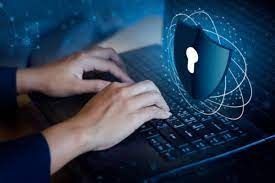establishing a secure learning environment for pupils online
The importance of a cyber-safe learning environment in the modern educational ecosystem, where digital technology and the teaching-learning process are converging, cannot be emphasized. Modern educators are stepping up their efforts to protect student privacy by strengthening security features inside their Learning Management Systems (LMS) as cutting-edge technology continue to obfuscate the borders between real and virtual worlds. These educators are acting as stewards of information and, as such, are leading the way in this endeavour.
A complete framework for facilitating online learning and improving course participation is offered by an LMS. The top LMS prioritizes not only the creation and delivery of courses but also important factors like content security and privacy.
Increased cybersecurity events necessitate the use of a robust LMS.
There are already an abundance of LMS systems accessible. To keep your course materials secure, you must choose an LMS with strong security measures. According to a Cybersecurity Ventures estimate, $8 trillion will be spent in 2023 as a result of cybercrime. Additionally, projections show a further increase to an unsettling $10.5 trillion by 2025. Data breaches may have far-reaching repercussions, including invasions of student privacy and the loss of private course materials. Teachers must carefully choose an LMS with unbreakable security features in light of this growing digital threat in order to protect the integrity of user data from malicious breaches.
using LMS to provide a digitally secure learning environment
The cautious selection of an LMS that can protect course data from unauthorized access is the first step in creating a digitally secure educational environment. Second, while selecting an LMS, educators should carefully take into account the security features and the LMS’s adherence to privacy laws. It is advised to choose an LMS with the following security features to make sure you are utilizing the proper platform that can prevent unauthorized access:
The Secure Sockets Layer (SSL) protocol is essential for increasing internet security measures. When SSL is enabled in an LMS, the information sent between the server and users is encrypted and only the related website and authorized users may access it. As a result, this strengthens online communication channels and ensures data privacy and confidentiality.
This security solution adds an extra degree of security to the login process using two-step verification. Users must provide a code sent to their mobile devices throughout the authentication procedure in addition to their login information. As a result, even if a hacker were to discover a user’s password, they would still need access to the user’s smartphone or unique fingerprint to access the LMS. By giving thorough user education on the value of using strong passwords, you may further improve the security of your LMS.
Single Sign-On (SSO): This user authentication method allows users to easily log in and access different resources with a single user ID and password, negating the need to remember several sets of log-in information. Users may easily access the LMS, for instance, by using their work email address and password rather than a new set of login information. In addition to increasing security, an LMS with SSO guarantees a smooth user experience for students.
Regular Data Backups: To improve the effectiveness of online learning and reduce the dangers of possible data loss, an LMS must be able to execute data backup operations autonomously. In the event that malicious software deletes or corrupts user information unintentionally, this preventative action may protect user data.
Dynamic watermarking: It provides an additional degree of protection to course materials and may stop sensitive information from being shared without permission. Users may recognize leaked documents by using dynamic watermarks, which include specific identifying information.
Once you choose a safe learning management system, it is important to educate both staff and students on responsible digital behavior. These behaviors include creating secure passwords, being alert to fraudulent phishing tactics, and being cautious when disclosing personal information online. Students must also be taught to recognize and report any questionable LMS activity right away. In addition, it is crucial to have a thorough strategy for handling cybersecurity issues, such as data breaches or cyber-attacks.
Monitoring and managing student data diligently is also necessary to provide a cyber-secure learning environment. This requires maintaining up-to-date software and security updates, maintaining user account evaluation and modification, and putting access controls in place for private data. User roles are essential for developing a well-structured framework in a safe learning environment, but they are not the least important. Even when users have access to the LMS, you may limit administrative powers and access to certain users, lowering the risk of data breaches or the unauthorized handling of sensitive information. Simply stated, educating students and staff about safe digital activities may help block future cybersecurity breaches and protect student privacy.
The advent of learning management systems (LMS) has dramatically changed the landscape of planning, carrying out, and evaluating targeted pedagogical journeys. This has altered the very nature of human learning and fostered new forms of interpersonal engagement. However, in addition to these transformational initiatives, a proactive approach is required given the inevitable rise of cyber threats. Being proactive in your preparation is the best way to fight such threats.







